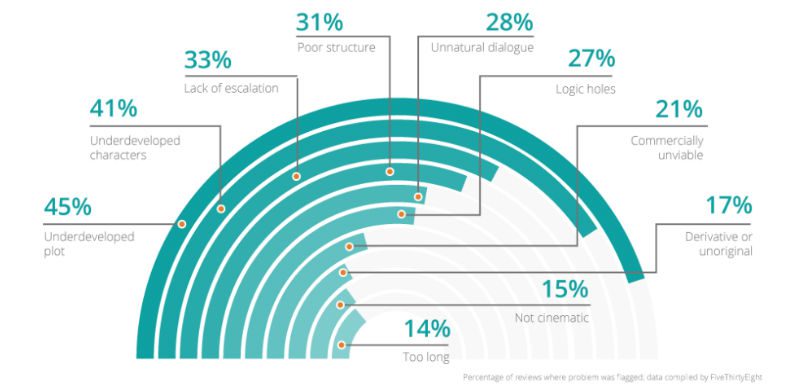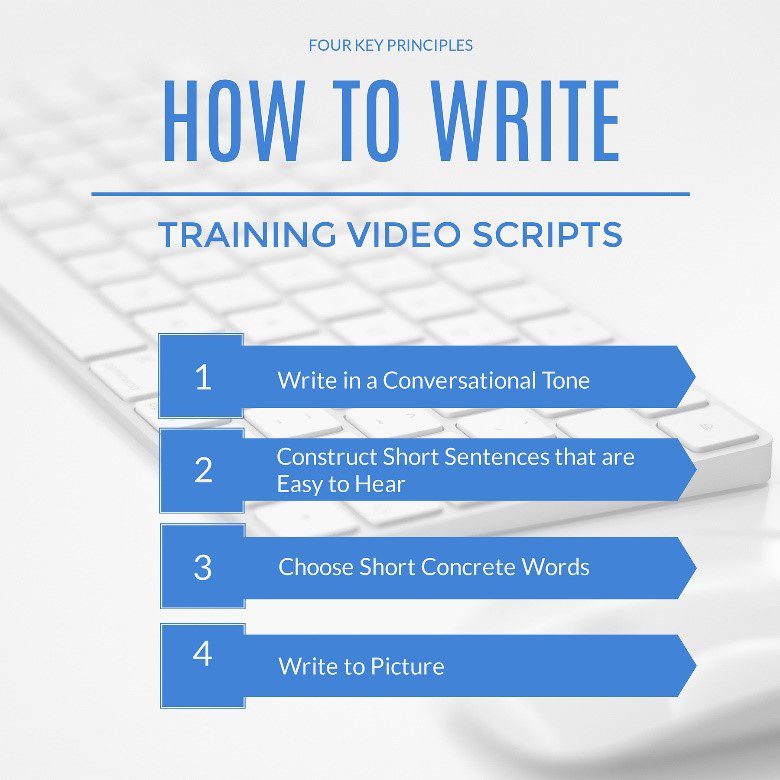Scripts are the blueprint for movies. They contain everything from dialogue to camera shots and scene descriptions.
A script is a tool that allows directors, actors, production designers, editors, and more to work together as a team in order to create an amazing film experience.
Scripts are often used in Hollywood to help actors memorize their lines and perform the scene. But scripts can also be considered as detailed instructions on how to do something, such as how to make a peanut butter sandwich.
SCRIPTS HOW TO WRITE
What Is Scriptwriting?
Scriptwriting is a process of transferring thoughts and ideas from your head to paper.
The act of writing out an idea or story in detail, typically for a movie or TV show. It can also be used for other media like a theatre production, commercials, radio dramas, etc.
It involves both the dialogues and descriptions in order to show what’s happening on screen. Scripts can be written by one person or many people with input from others involved in the project.
Some good advice when it comes to screenplay formatting would be to follow the same format as industry professionals. This means using Courier New font at 12pt with 1-inch margins all around the page.
Ever wondered how iconic movie lines are born?
It all starts with a script, the blueprint of every great film, TV show, or play.
We’re diving into the art of scriptwriting, unraveling the secrets behind crafting compelling dialogue and powerful scenes.
Stick with us, and we’ll show you how to turn a blank page into a story that captivates audiences.
The Importance Of Scriptwriting
Scriptwriting is a founding pillar of any compelling narrative in film or television.
It lays down the roadmap for directors, actors, and crew, detailing every visual, dialogue, and action that narrates the story.
Crafting an impactful script is akin to building a blueprint for a construction project.
Without it, the foundation of the film could be left shaky, lacking a coherent storyline and compelling character arcs.
Woven within the script are the indispensable elements that define the heartbeat of the screenplay:
- Characters – who drive the plot forward with their depth and complexities,
- Dialogue – the words that resonate with audiences, bringing the narrative to life,
- Scene setting – crafting the visual texture that immerses viewers in the story’s world,
- Plot structure – the backbone that holds the story arcs and keeps the audience engaged.
A script is more than just words on a page.
It’s a crucial investment in pre-production that saves time, streamlines filming processes, and forewarns possible challenges.
Tremendous scripts generate iconic moments that remain etched in cinema history.
Consider the chilling delivery of “I’ll be back” in The Terminator, or the heart-wrenching “You can’t handle the truth!
” from A Few Good Men.
These lines didn’t just happen; they were meticulously crafted and immortalized through scriptwriting.
Our expertise in this craft emphasizes the meticulous attention to detail involved in script development.
From our experience, the scripts that evoke powerful emotions and resonate with viewers are those that are given the necessary time and creative energy.
Understanding the pillars of a strong script is essential.
This understanding directs the seemingly disparate pieces of production into a cohesive and memorable film experience.
Understanding The Elements Of A Script
As creators in the realm of film, we recognize the core components of a script as the backbone of any successful production.
In this section, we’ll jump into the essential elements that bring a screenplay to life.
Characters lay the foundation for the story’s emotional connection.
They’re imagined personalities we craft, each with their own desires, conflicts, and growth arcs.
Dialogue is the voice of our characters.
It drives the narrative forward and reveals their inner workings.
Setting up Scenes is akin to painting on a canvas – but with words.

Each scene must evoke imagery, suggest moods, and provide context.
Let’s explore the Plot Structure, which guides our audience through the narrative:
- Exposition – introducing the world and its characters,
- Rising Action – building tension and complications,
- Climax – the turning point where outcomes are unclear,
- Falling Action – the aftermath of the climax,
- Resolution – the conflicts resolve and we understand the characters’ arcs.
Themes resonate with viewers by weaving underlying messages throughout the narrative.
Films like The Godfather and Citizen Kane tackle themes of power and corruption, making them relatable and timeless.
We ensure Pacing adjusts the rhythm of the screenplay.
Fast pacing heightens tension while a slower pace allows for deeper character exploration.
Incorporating Symbolism gives layers of meaning to our story, using objects or actions to represent ideas beyond the literal sense.
Conflict is the engine of our screenplay.
Internal and external struggles keep the story moving and our audience engaged.
As we detail these components, we’re constructing more than just a script – we’re breathing life into a world that will captivate and entertain, ensuring our place in the legacy of memorable filmmaking.
Crafting Engaging Dialogue
Good dialogue is the lifeblood of any script.
It’s the means through which characters interact, reveal their depths, and advance the plot.
We can’t overstate its importance – realistic and sharp dialogue can elevate a film from average to unforgettable.
Think of the snappy exchanges in The Social Network or the haunting monologues in There Will Be Blood; these films showcase how dialogue contributes significantly to character development and audience engagement.
What makes dialogue stand out?
It’s not just about what’s said but also how and why it’s said.
Each character’s voice must be distinct, reflecting their personality, background, and current situation.
Here are key considerations for refining dialogue:
- Ensure the speech patterns match the character’s upbringing and current status.
- Use subtext to convey more than the words themselves express.
- Keep it concise – lengthy monologues rarely happen in real conversation.
When we pen a screenplay, we’re always mindful of these attributes.
Our dialogue serves a dual purpose – it’s both informative and entertaining.
We aim to weave exposition seamlessly into conversations without making it feel forced.
That’s the true art of scriptwriting – giving the audience all they need to understand the story without them even realizing it.
Integrating humor and wit also adds a layer of relatability to characters.
Audiences often gravitate towards characters that can make them laugh or think differently about a situation.
But, we must balance levity with gravity to create scenes that resonate on multiple emotional levels.
Visual cues often accompany dialogue, providing context that words alone can’t achieve.
It’s in the unspoken – a character’s glance or a lingering silence – that sometimes the most powerful communication occurs.
hence, while we meticulously craft dialogue, we also pay close attention to the actions and expressions that go hand-in-hand with the words spoken.
Building Powerful Scenes
When scripting, envisioning powerful scenes is key to gripping an audience.
Our aim is to create a visual narrative that invites viewers to be more than spectators; they become participants in the unfolding story.
A well-constructed scene serves multiple purposes – it propels the plot, showcases characters’ evolution, and heightens emotional engagement.
Engaging scenes are the DNA of films like The Godfather or Inception, where audience members recall moments vividly, often long after the credits have rolled.
Our focus extends to the tangible details within a scene.
These include:
- Location and setting – is it enhancing the narrative?
- Props and costumes – do they reflect character development?
- Lighting and color palette – what mood are they setting?
Every detail matters, creating layers of subtext and providing depth to onscreen interactions.
Consider how the minimalistic approach in Moonlight uses setting and color to amplify emotion.
Dialogue must be purposeful.
It needs to reveal something about the plot or the characters, or ideally, both.
Sparse dialogue can often be more powerful than heavy, saturating exchanges, much like the charged silences in No Country for Old Men.
Rhythm within scenes is our secret ingredient for audience retention.
Varying the pace from fast to slow, using techniques such as cross-cutting or parallel editing, keeps viewers engaged and builds suspense, thinking about all those edge-of-your-seat moments in Mad Max: Fury Road.
Memorable scenes often capitalize on the element of surprise.
Unexpected twists and unconventional decisions by characters keep viewers guessing and invested, evident in Fight Club where ordinary scenes quickly escalate to the extraordinary.
Ensuring that every scene counts is our mantra.
It’s not about filling time; it’s about making time stand still, even if just for a moment.
Through meticulous planning and creative execution, every scene has the potential to resonate with audiences on a profound level.
The Process Of Writing A Script
We understand that scriptwriting is an intricate craft.
It starts with an idea that must then evolve into a detailed screenplay.
Before pen or pixel is put to page, we invest time into researching our theme or subject.
We recognize the importance of authenticity and strive to gain insights and knowledge to make the screen world feel real.
We then transition into outlining our script.
A well-constructed outline serves as the roadmap for our narrative and includes:
- Key plot points,
- Character arcs,
- Scene breakdowns.
We ensure that our plot structure adheres to classic paradigms while seeking opportunities for innovation.
Movies like Inception redefine story structure, encouraging us to bold experimentation within our own projects.
Character development is next.
We dedicate effort to create multi-faceted characters that audiences can connect with.
Each character’s backstory, motivations, and evolution are meticulously crafted to reflect genuine human complexity.
Dialogue is drafted with precision.
We work to give each character a distinct voice that aligns with their personality and background.
Moments of monologue are used sparingly and only when they push the story forward or reveal key character insights.
Revisions are an essential part of our scriptwriting process.
We review each draft with a critical eye, always seeking ways to tighten the narrative and enhance engagement.
Feedback from trusted peers is invaluable during this phase.
Throughout the process, we maintain a balance between descriptive passages and dialogue.
It’s vital that visual elements are clearly depicted without overwhelming readers with extraneous detail.
We appreciate the fluid nature of script writing.
We’re open to adapt and revise as the story takes shape and new ideas emerge.
Our scriptwriting journey is one of constant learning and reinvention.
By embracing the challenges and complexities of script development, we strive to create works that are not just read but are brought to life on the screen.
How To Write Scripts – Wrap Up
We’ve journeyed through the art of scriptwriting, understanding its critical role in storytelling for screen.
By focusing on the backbone elements that make a script strong and engaging, we’ve laid out a roadmap for anyone to follow.
Remember, it’s about bringing those multi-faceted characters to life, weaving dialogue that resonates, and crafting a plot that keeps viewers on the edge of their seats.
As you draft, revise, and perfect your screenplay, keep in mind that every word counts in the quest to create a memorable cinematic experience.
Let’s take these insights and turn them into scripts that not only read well on paper but also leave a lasting impression on the screen.
Frequently Asked Questions
What Are The Key Elements Of A Script?
A script is built on key elements including characters, dialogue, the setting of scenes, plot structure, themes, pacing, symbolism, and conflict.
These components are crucial for crafting a story that engages the audience.
Why Is Researching Important In Scriptwriting?
Researching the theme or subject matter is vital to scriptwriting as it ensures authenticity, helps build a credible world, and supports the development of realistic characters and dialogues, contributing to a relatable and engaging narrative.
How Does Outlining Benefit The Scriptwriting Process?
Outlining is a preparatory step that serves as a roadmap for the script.
It helps in organizing the plot structure, planning scenes, and managing pacing, ultimately providing a clear direction for the narrative’s development.
Why Is Character Development Important In Scripts?
Developing multi-faceted characters is essential because they drive the narrative and form connections with the audience.
Well-crafted characters with depth make the story more engaging and believable.
What Is The Role Of Dialogue In A Script?
Dialogue advances the plot and reveals character traits.
Crafting precise dialogue is critical to convey character intentions, emotions, and dynamics, and to keep the audience invested in the story.
How Important Is Revision In The Scriptwriting Process?
Revising the script is a critical step to refine and improve the storyline, characters, and dialogue.
It involves adapting and reworking elements to enhance narrative engagement and to ensure all parts contribute effectively to the story’s overall impact.
What Balance Should Be Struck Between Descriptive Passages And Dialogue In Scripts?
A script should balance descriptive passages and dialogue to maintain a dynamic rhythm.
Descriptive passages set the scene, while dialogue propels the narrative.
A well-balanced script engages viewers visually and emotionally.
Can The Scriptwriting Process Change Once It Begins?
Yes, scriptwriting is an iterative process that involves constant learning and adaptation.
As the story evolves, revisions may be needed, highlighting the importance of flexibility and creativity in the scriptwriting journey.






